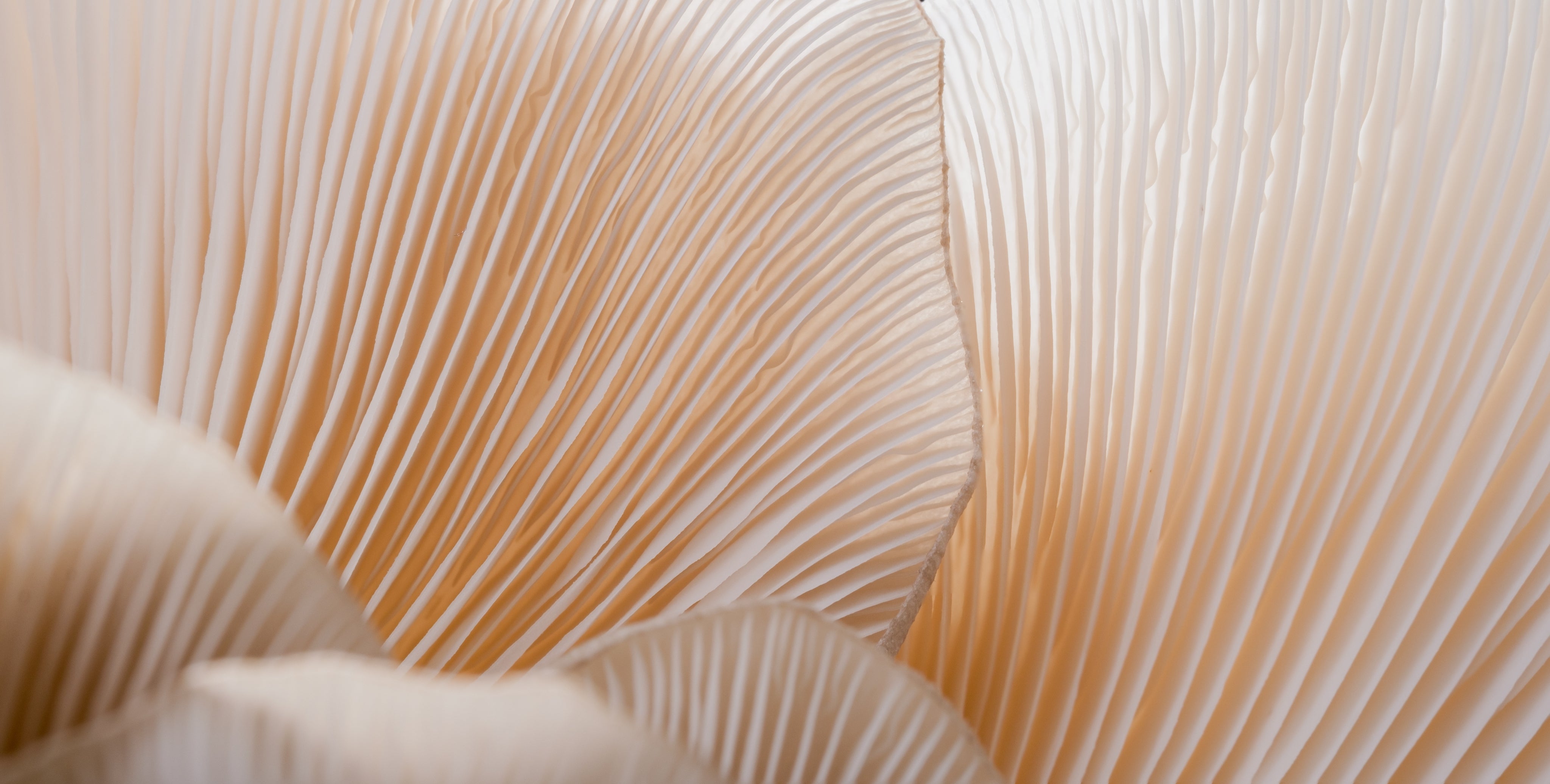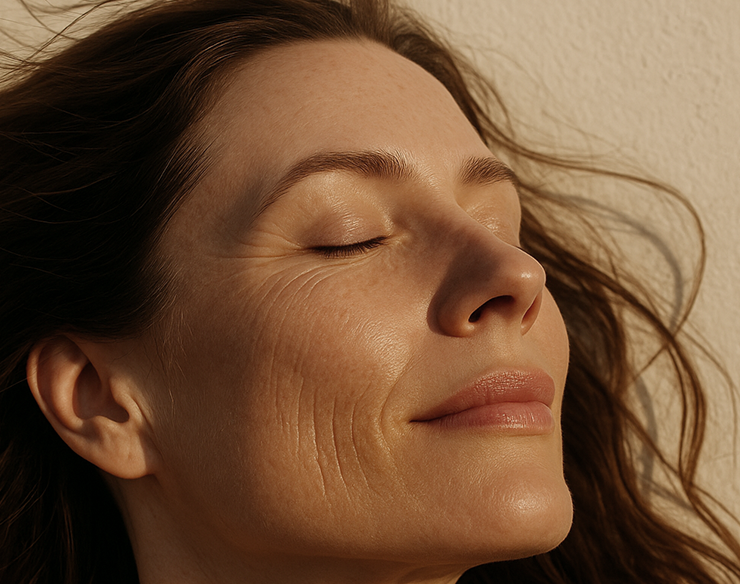The connection between your gut and your skin is stronger than you might think. If you suffer from stubborn skin problems, the solution may actually lie in your digestive system. The link between skin and gut is well documented scientifically and is referred to as the "gut-skin axis." In this article, you will learn how your gut flora affects your skin's appearance and what practical steps you can take to improve both your gut health and your skin's condition.
What is the gut flora and why is it important for the skin?
Your gut flora, also called the gut microbiome, consists of trillions of microorganisms living in your digestive tract. These invisible helpers play a central role in your health – far beyond digestion. They support your immune system, produce important vitamins, and control inflammatory processes in your body.
The Gut-skin axis describes the direct communication between your gut microbiome and your skin. When your gut flora is balanced, it can reduce inflammation and strengthen the skin barrier. A healthy gut flora produces short-chain fatty acids that have anti-inflammatory effects and can protect both the gut lining and the skin.
Your gut and your skin also share similar embryonic origins and have comparable barrier functions. Both protect your body from harmful substances and react sensitively to imbalances. This biological relationship explains why skin problems are often related to the gut.
How does a disturbed gut affect the skin?
If your gut flora becomes imbalanced – medically called dysbiosis – this can directly affect your skin. A disturbed gut can promote chronic inflammation that spreads throughout the body via the bloodstream and also reaches your skin.
A practical example: If you are frequently stressed and eat an unbalanced diet, this can weaken your gut barrier. Harmful bacteria and toxins then more easily enter the bloodstream and can exacerbate skin inflammation. This can manifest as acne, eczema, or general skin blemishes.
Another example is taking antibiotics. These medications cannot distinguish between "good" and "bad" bacteria and often destroy large parts of your gut flora. Many people notice temporary skin problems after antibiotic treatment until their gut flora recovers.
A consistently one-sided diet high in sugar and low in fiber can also promote problematic bacteria. These produce increased amounts of inflammation-promoting substances that can affect your skin condition via the gut-skin axis.
How can you tell if your skin problems might come from your gut?
Certain signs indicate that your skin problems may be related to your gut health. Watch out for the following warning signals:
Digestive complaints combined with skin problems: If you also suffer from bloating, irregular bowel movements, or abdominal pain and have skin blemishes, this may indicate a disturbed gut-skin axis.
Skin problems after eating certain foods: If your skin worsens after consuming dairy products, gluten-containing foods, or very sugary dishes, this may be a sign of food intolerances or intestinal problems.
Chronic inflammation: Persistent skin redness, recurring acne, or eczema that do not respond to topical treatments can be influenced from within – that is, from the gut.
Fatigue and weak immune system: Since 70% of your immune system is located in the gut, frequent colds or chronic fatigue along with skin problems can indicate a disturbed gut flora.
This is how you support your gut flora through nutrition
Proper nutrition is the cornerstone for a healthy gut flora and thus also for beautiful skin. With targeted dietary changes, you can positively influence the balance of your gut bacteria.
Eat more fiber
Fiber is the favorite food of your "good" gut bacteria. They ferment these indigestible plant fibers and produce short-chain fatty acids that can have anti-inflammatory effects. Oatmeal, lentils, apples, broccoli, and whole grain products are especially rich in fiber.
Start gradually increasing your fiber intake to avoid digestive discomfort. About 30 grams of fiber per day are ideal for most adults. A serving of oatmeal with berries for breakfast and a colorful salad with legumes for lunch can already make a big difference.
Less sugar and processed foods
Sugar and highly processed foods can promote harmful bacteria in your gut and reduce the diversity of your gut flora. These "bad" bacteria produce increased amounts of inflammation-promoting substances that can negatively affect your skin's appearance.
Gradually reduce the consumption of soft drinks, sweets, fast food, and ready-made snacks. Replace them with natural alternatives: instead of sweets, reach for fresh fruit; instead of soft drinks, unsweetened teas or water with lemon.
Incorporate fermented foods regularly
Fermented foods contain live bacterial cultures that can directly enrich your gut flora. Natural yogurt, kefir, sauerkraut, kimchi, and kombucha are excellent sources of probiotic bacteria.
Start with small portions, as your digestive system needs to get used to the new bacteria. A small cup of natural yogurt in the morning or a forkful of sauerkraut at dinner are good beginnings. Make sure the products are not pasteurized, as the heating process kills the live bacteria.
Drink enough water
Adequate fluid intake supports both your digestion and the moisture of your skin. Water helps flush toxins from the body and keeps the mucous membranes in the gut healthy.
Drink 1.5 to 2 liters of water daily, more during physical activity. If plain water is too boring for you, you can spice it up with fresh herbs, cucumber slices, or lemon juice.
Supplements for skin and gut
Even though a balanced diet forms the foundation, targeted Dietary supplements for the gut meaningfully support your efforts.
Probiotics – Good bacteria for your balance
Probiotics are living microorganisms that can restore the balance of your gut flora. They can Reduce inflammation and strengthen the skin barrier. Especially the bacterial strains Lactobacillus acidophilus and Bifidobacterium bifidum have proven to be skin-friendly in studies.
When choosing probiotics, you should pay attention to the number of live cultures, the diversity of bacterial strains, and an acid-resistant encapsulation. Regular intake over several weeks is important, as the gut flora changes slowly.
Prebiotics – The food for your gut flora
Prebiotics are indigestible fibers that serve as food for your existing "good" gut bacteria. Inulin, oligofructose, and resistant starch are particularly effective prebiotics. You can naturally find these in onions, garlic, chicory, and green bananas.
Prebiotics can enhance the effect of probiotics and are often the more sustainable solution, as they promote your already existing bacteria instead of adding new ones.
Nutrador® products that can help
Nutrador® offers various Nutraceuticals, which can support your gut-skin health. The Opti Enzyme Complex® can improve digestion and thus optimize nutrient absorption. Better digestion means fewer undigested particles that could promote inflammation.
The Curcumin Complex Alpha contains high-quality turmeric extract, known for its anti-inflammatory properties. Curcumin can positively influence both gut inflammation and skin inflammation. If you are looking for the best dietary supplements if you are looking, you will find high-quality products with scientifically proven ingredients at Nutrador®.
More tips for a healthy skin-gut connection
In addition to nutrition and supplements, other factors also play an important role for the gut-skin axis.
Stress management: Chronic stress can weaken the gut barrier and promote inflammation. Regular relaxation exercises such as meditation, yoga, or simple walks can help both your gut and your skin. Just 10 minutes daily can make a noticeable difference.
Adequate sleep: While you sleep, not only your skin regenerates, but also your gut flora. 7-8 hours of quality sleep per night is optimal. A regular bedtime and a relaxing evening ritual can improve sleep quality.
Regular exercise: Moderate physical activity can promote the diversity of your gut flora and improve skin circulation. You don't have to become a marathon runner – just 30 minutes of brisk walking daily can have positive effects.
Conclusion - Does my gut flora affect my skin?
The connection between gut and skin is a fascinating example of how closely different body systems are linked. A healthy gut flora can not only improve your digestion but also contribute to clearer, more radiant skin.
The most important steps for a healthy gut-skin axis are a fiber-rich diet, avoiding too much sugar and processed foods, regular consumption of fermented foods, and sufficient fluid intake. Additionally, high-quality probiotics and prebiotics can support your efforts.
Remember that changes take time. Your gut flora needs several weeks to months to regenerate, and you should be equally patient with improving your skin appearance. With consistency, the right measures, and the appropriate dietary supplements however, you can sustainably improve both your gut health and your skin appearance.
FAQ – Gut care for beautiful skin
Legal notice regarding health-related claims:
Our information is for general informational purposes only and does not replace medical advice. Dietary supplements do not replace a balanced diet and a healthy lifestyle. Health-related claims about dietary supplements must comply with the Health Claims Regulation (EC) No. 1924/2006 and be approved by the European Food Safety Authority (EFSA). If you have health complaints or questions, please consult a doctor.












